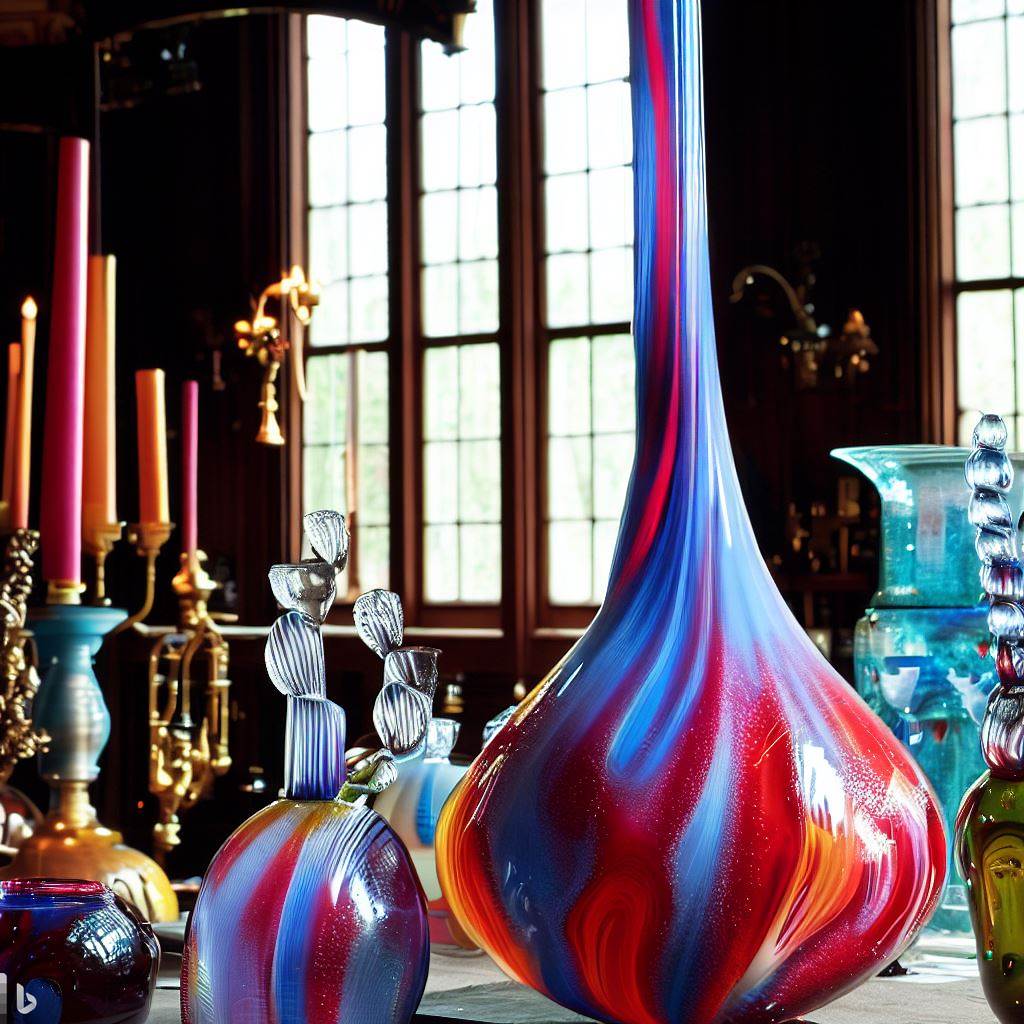Igniting a New Creative Fire: The Glassblowing Renaissance
While refined over millennia, glassblowing endured a period of industrial decline as traditional artistry waned. But starting in the 1960s, a vibrant revival movement arose seeking to reclaim glassblowing’s limitless creative spirit. Propelled by pioneering artists and democratized access, the glassblowing renaissance still burns brightly, stoking renewed passion for discovery through this luminous medium.
Transition From Craft to Art
Prior to the 1960s, glassblowing served largely utilitarian ends fabricating vessels, windows, and tableware in factories. A division existed between refined art and applied crafts. Seeking to elevate glass intellectually by merging fine art concepts with technical mastery, Harvey Littleton and others championed glassblowing as an expressive sculptural medium.
This shifted glassblowing’s purpose towards pure creative exploration. New movements like Studio Glass placed blown glass objects into galleries among prestigious fine art. Emphasis moved to conceptual expression over functional production pieces. Glass assumed its rightful status as a premier art material.
Establishing University Glass Programs
In 1964, Littleton founded the first glass program at the University of Wisconsin, soon followed by others like Marvin Lipofsky’s influential program at the University of California, Berkeley. Previously untaught formally in the U.S., these university programs trained new generations in the techniques while promoting interdisciplinary approaches.
This academic environment encouraged experimentation and critique. Students fused glass with larger artistic questions about society, nature, and imagination. University glass programs nurtured many pioneers who diversified the medium’s scope exponentially.
Spawning the Studio Glass Movement
The proliferation of small-scale glass studios provided ideal conditions for innovation as newly trained glassblowers set up independent shops to freely explore their own directions, unhindered by industry constraints. This led to an explosion of new techniques and styles blended from multiple inspirations.
Notable movement leaders like Dale Chihuly, Dante Marioni, and Daniel Clayman demonstrated glass’s untapped artistic horizons for others to build upon. The fresh perspectives flowing from small home studios revitalized glassblowing with a bold individualistic spirit of radical creative freedom.
Expanding Public Access and Visibility
Whereas glassmaking had been sequestered in factories, the studio glass movement invited public participation through classes and studio tours. This boosted glass’s visibility while allowing hands-on learning. Increasing museum acquisitions and traveling exhibitions highlighted glass as collectible art.
Documentaries like Netflix’s Blown Away brought glassblowing directly into living rooms. Social media provided visibility. Greater interaction strengthened the glass community and forged new markets. Out of obscurity, glass emerged reborn in the cultural zeitgeist.
Contemporary Directions in Glass
Today’s glass artists honor foundations while exploring radical new applications. Enormous solid glass sculptures defy fragility stereotypes. Mixed media combinations provoke perceptions. Conceptual works challenge assumptions. Others highlight environmentalism through upcycled glass.
While respecting the past, boundary-pushing artists display boundless creativity. Each innovation propels glassblowing into an ever more expressive artistic realm. The medium constantly reinvents itself through those who expand its frontiers.
The Ever-Changing Dance of Molten Light
Rather than fade as a historical relic, glassblowing now thrives dynamically through creative disruption. The artform remains primal as masters meditatively engage with enchanted material. Yet bold vision aligns it squarely with the now. Like glowing liquid, glassblowing flows forward propelled by those who keep its inner fire burning. The dance between breath, heat, and human imagination never stales when open to creative possibility. Each generation of artists ensures glassblowing’s light shines bright into the future.
